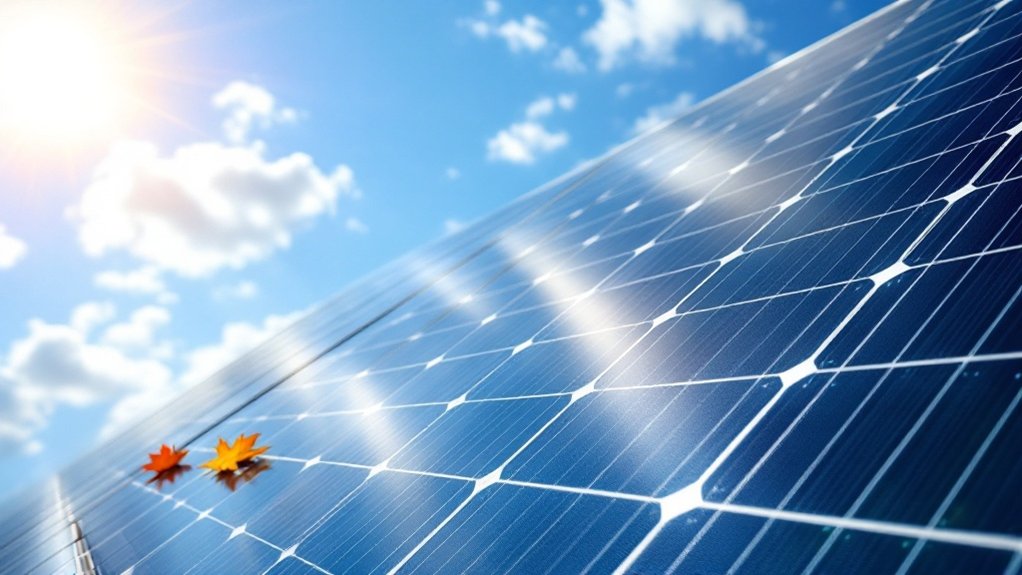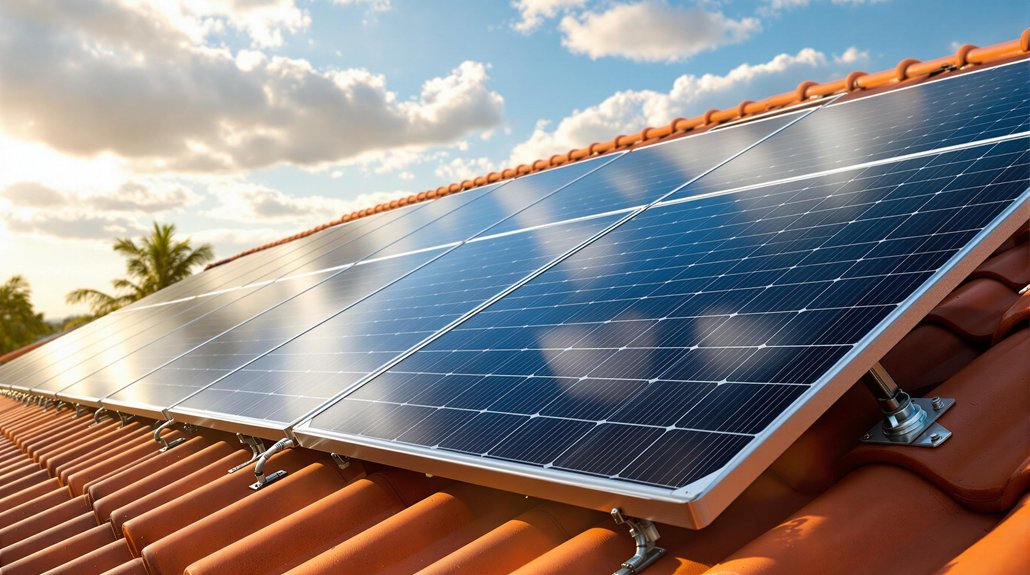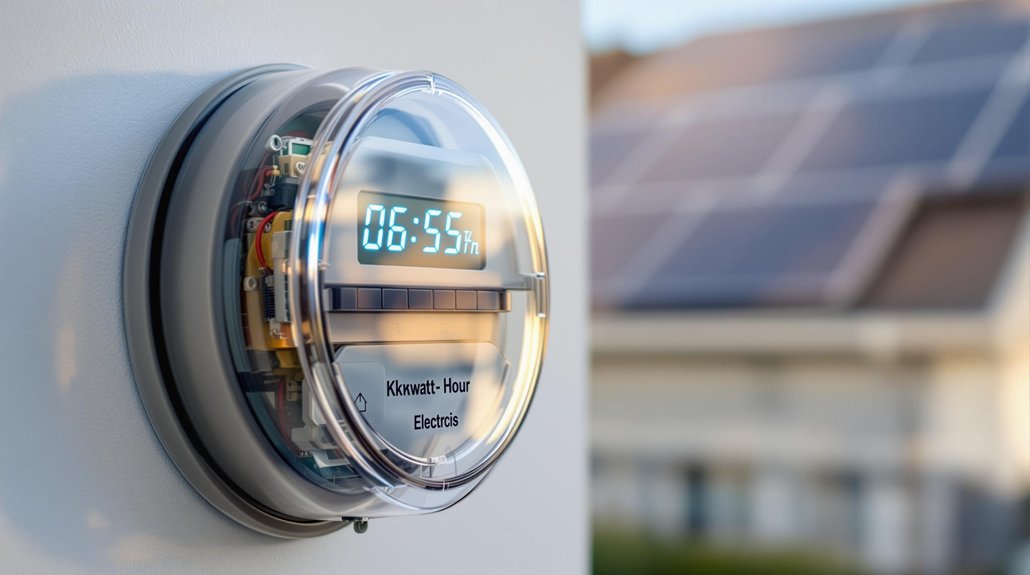Solar panels turn sunlight into electricity through a surprisingly simple process. When photons hit the silicon cells, they knock electrons loose from their atoms, creating electron-hole pairs. These freed electrons, like tiny dancers at a microscopic mosh pit, flow through conductive metal sheets to generate electricity. The panels convert DC power, which inverters transform into usable AC electricity at up to 98% efficiency. Modern solar technology packs quite the punch – and there’s more to this power-packed story.

The humble solar panel, a marvel of modern engineering, transforms sunlight into electricity through a process that would make Einstein proud. At its core, a solar panel is basically a silicon sandwich – layers of semiconductors wrapped in glass and metal, desperately trying to avoid reflection like a vampire avoiding mirrors. Its anti-reflective coating makes sure those precious photons don’t bounce away before doing their job. Under standard test conditions, optimal panel efficiency is carefully measured to determine performance ratings.
Solar panels: nature’s high-tech sandwich, where silicon and sunlight dance together in a delicate photovoltaic tango.
When sunlight hits the silicon cells, things get interesting. Photons crash into silicon atoms like tiny bowling balls, knocking electrons loose and creating what scientists call “electron-hole pairs.” These freed electrons, suddenly finding themselves unemployed, start flowing through the panel’s conductive metal sheets, creating an electrical current. It’s like a microscopic mosh pit, but with actual purpose. The positive and negative layers create the essential electric field that drives this electrical generation process.
Here’s where the party gets technical. Solar panels produce DC electricity, which is about as useful to most homes as a chocolate teapot. That’s why inverters step in, converting DC to AC power with remarkable efficiency – we’re talking 95-98% conversion rates. Not bad for a box full of electronics doing the electric slide. This energy storage capability ensures power is available even during peak demand times when the sun isn’t shining.
Different types of solar panels handle this process with varying levels of success. Monocrystalline panels, the overachievers of the solar world, convert 15-22% of sunlight into electricity. Their polycrystalline cousins manage 13-16%, while thin-film panels bring up the rear at 10-12%. Laboratory darlings called perovskite cells can hit 25% efficiency, though they’re still working out their real-world issues.
The average residential solar setup sports 20-25 panels, each cranking out 250-400 watts when the sun’s playing nice. Of course, real-world performance depends on factors like panel orientation, temperature (these things actually work better when cool), and whether your neighbor’s tree is throwing shade – literally.
With proper maintenance, these silicon warriors keep converting sunlight into electricity for 25-30 years, silently fighting climate change while your electric meter runs backward. Zero emissions during operation, unless you count the occasional bird dropping.








